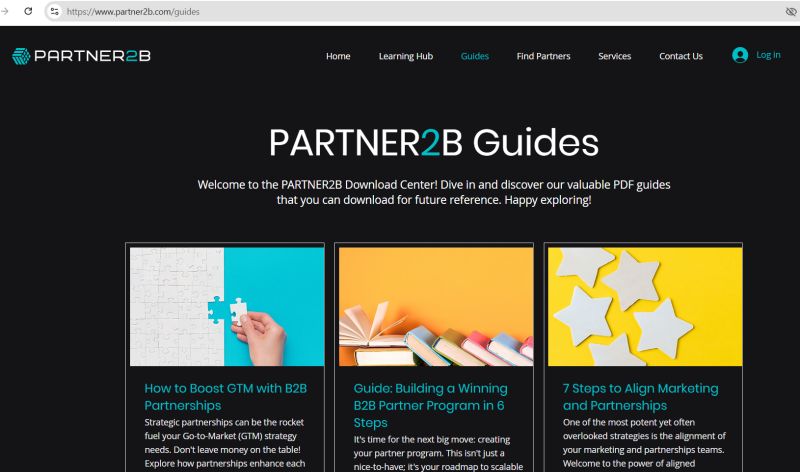Your cart is currently empty!
Unlocking Success A Deep Dive into B2B Partner Programs

Understanding B2B Partner Programs
B2B partner programs are strategic alliances that allow businesses to leverage each other’s strengths, resources, and customer bases. These programs serve as a cornerstone for companies looking to expand their market reach, improve product offerings, and enhance customer satisfaction. For instance, b2b partner programs partner2b.com provides an innovative platform that helps companies forge successful partnerships and streamline collaboration. In this article, we will delve into the various aspects of B2B partner programs and how they can transform the landscape of business operations.
The Value of B2B Partnerships
B2B partnerships bring numerous advantages, predominantly through the concept of mutual growth. When two businesses collaborate, they can combine their resources for enhanced efficiency and productivity. Moreover, these partnerships can foster innovation by pooling together diverse expertise and technological capabilities. In an increasingly interconnected marketplace, having a strong network of partners can mean the difference between thriving and merely surviving.
Types of B2B Partner Programs
The world of B2B partnerships is diverse, with various structures and models that businesses can adopt. Some common types of B2B partner programs include:
- Referral Partnerships: Here, one business refers clients to another in exchange for a commission or fee. This is a straightforward way to generate leads without the need for extensive marketing efforts.
- Channel Partnerships: In this model, a company partners with distributors, resellers, or agents who sell its products or services. This allows for a wider reach and more significant market penetration.
- Technology Alliances: By collaborating with tech firms, businesses gain access to innovative solutions that can enhance their offerings or improve internal processes.
- Joint Ventures: Two or more businesses may decide to create a new entity for a specific project or product. This deep level of commitment often leads to shared risks and rewards.
How to Create a Successful B2B Partner Program
Establishing a successful B2B partner program involves careful planning and execution. Here are some key steps to consider:
- Identify Potential Partners: Research and select companies that complement your offerings and share similar values and goals.
- Define Objectives: Clearly outline what you hope to achieve through the partnership. This may include revenue targets, market expansion goals, or brand awareness objectives.
- Draft Agreements: Establish clear terms and conditions that define the roles, responsibilities, and financial arrangements between partners.
- Implement Training Programs: Providing training helps partners understand your products and services, ensuring they can represent your brand effectively.
- Monitor and Evaluate: Regularly review the performance of the partnership against set objectives, making adjustments as necessary for optimal results.
Cultivating Relationships Beyond Contracts

The essence of successful B2B partnerships lies in nurturing the relationship beyond contractual obligations. Maintaining open lines of communication, providing feedback, and being responsive to partners’ needs can significantly enhance the cooperation’s effectiveness. It’s crucial to establish trust and transparency, which will lead to a more fruitful and long-lasting partnership.
Measuring the Success of B2B Partner Programs
To determine the effectiveness of a B2B partner program, businesses must establish clear metrics for success. These might include:
- Revenue Generated: Assess the sales and revenue growth directly attributed to the partner program.
- Lead Generation: Evaluate the number and quality of leads acquired through the partnership.
- Customer Satisfaction: Monitor customer feedback and satisfaction rates pertaining to joint offerings.
- Market Reach: Analyze growth in market share and customer demographics as a result of the partnership.
Common Challenges in B2B Partner Programs
While B2B partnerships can yield significant benefits, they are not without challenges. Common issues that may arise include:
- Misalignment of Goals: Divergent business objectives can lead to friction unless clearly defined and negotiated.
- Lack of Communication: Without effective communication channels, misunderstandings can occur, damaging the partnership.
- Performance Discrepancies: If one partner fails to meet expectations, it can jeopardize the collective results.
Future Trends in B2B Partner Programs
As technology advances and market dynamics evolve, B2B partner programs are likely to undergo significant changes. Key trends that will shape the future landscape include:
- Increased Use of Digital Platforms: Businesses will increasingly rely on digital solutions for partner management, streamlining communication and performance tracking.
- Focus on Data Security: As partnerships often involve sharing sensitive information, ensuring data security will be paramount.
- Personalization of Partner Experiences: Tailoring programs to meet the specific needs of different partners can enhance satisfaction and loyalty.
Conclusion
In conclusion, B2B partner programs offer unparalleled opportunities for growth and innovation in today’s competitive market. By fostering strong alliances, businesses can leverage mutual strengths, expand their market reach, and ultimately drive success. However, it’s essential to approach these partnerships with a clear strategy, ongoing communication, and a commitment to joint objectives. With these elements in place, companies can unlock the full potential of B2B partnerships and pave the way for a prosperous future.